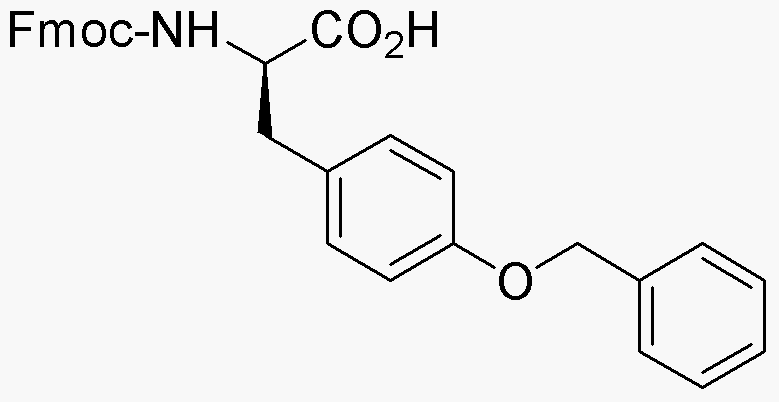Fmoc-O-benzyl-D-tyrosine is widely utilized in research focused on:
- Peptide Synthesis: This compound serves as a key building block in solid-phase peptide synthesis, allowing researchers to create complex peptides with high purity and yield.
- Drug Development: It plays a significant role in the pharmaceutical industry for developing peptide-based drugs, particularly in targeting specific receptors or pathways in diseases.
- Bioconjugation: The compound is used in bioconjugation techniques to attach peptides to various biomolecules, enhancing the efficacy of therapeutic agents.
- Research in Neuroscience: Its application in studying neuropeptides aids in understanding neurological disorders, providing insights into potential treatments.
- Custom Synthesis Services: Many chemical suppliers offer custom synthesis of this compound, catering to specific research needs and ensuring availability for various applications.
Informations générales
Propriétés
Sécurité et réglementation
Applications
Fmoc-O-benzyl-D-tyrosine is widely utilized in research focused on:
- Peptide Synthesis: This compound serves as a key building block in solid-phase peptide synthesis, allowing researchers to create complex peptides with high purity and yield.
- Drug Development: It plays a significant role in the pharmaceutical industry for developing peptide-based drugs, particularly in targeting specific receptors or pathways in diseases.
- Bioconjugation: The compound is used in bioconjugation techniques to attach peptides to various biomolecules, enhancing the efficacy of therapeutic agents.
- Research in Neuroscience: Its application in studying neuropeptides aids in understanding neurological disorders, providing insights into potential treatments.
- Custom Synthesis Services: Many chemical suppliers offer custom synthesis of this compound, catering to specific research needs and ensuring availability for various applications.
Documents
Fiches de données de sécurité (FDS)
La FDS fournit des informations de sécurité complètes sur la manipulation, le stockage et l’élimination du produit.
Spécifications du produit (PS)
Le PS fournit une description complète des propriétés du produit, notamment sa composition chimique, son état physique, sa pureté et les exigences de stockage. Il détaille également les plages de qualité acceptables et les applications prévues du produit.
Certificats d'analyse (COA)
Recherchez des certificats d'analyse (COA) en saisissant le numéro de lot du produit. Les numéros de lot et de lot se trouvent sur l'étiquette d'un produit, après les mots « Lot » ou « Lot de fabrication ».
Numéro de catalogue
Numéro de lot/série
Certificats d'origine (COO)
Ce certificat d'exploitation confirme le pays dans lequel le produit a été fabriqué, et détaille également les matériaux et composants utilisés et s'il est issu de sources naturelles, synthétiques ou autres sources spécifiques. Ce certificat peut être requis pour les douanes, le commerce et la conformité réglementaire.
Numéro de catalogue
Numéro de lot/série
Fiches de données de sécurité (FDS)
La FDS fournit des informations de sécurité complètes sur la manipulation, le stockage et l’élimination du produit.
DownloadSpécifications du produit (PS)
Le PS fournit une description complète des propriétés du produit, notamment sa composition chimique, son état physique, sa pureté et les exigences de stockage. Il détaille également les plages de qualité acceptables et les applications prévues du produit.
DownloadCertificats d'analyse (COA)
Recherchez des certificats d'analyse (COA) en saisissant le numéro de lot du produit. Les numéros de lot et de lot se trouvent sur l'étiquette d'un produit, après les mots « Lot » ou « Lot de fabrication ».
Numéro de catalogue
Numéro de lot/série
Certificats d'origine (COO)
Ce certificat d'exploitation confirme le pays dans lequel le produit a été fabriqué, et détaille également les matériaux et composants utilisés et s'il est issu de sources naturelles, synthétiques ou autres sources spécifiques. Ce certificat peut être requis pour les douanes, le commerce et la conformité réglementaire.


